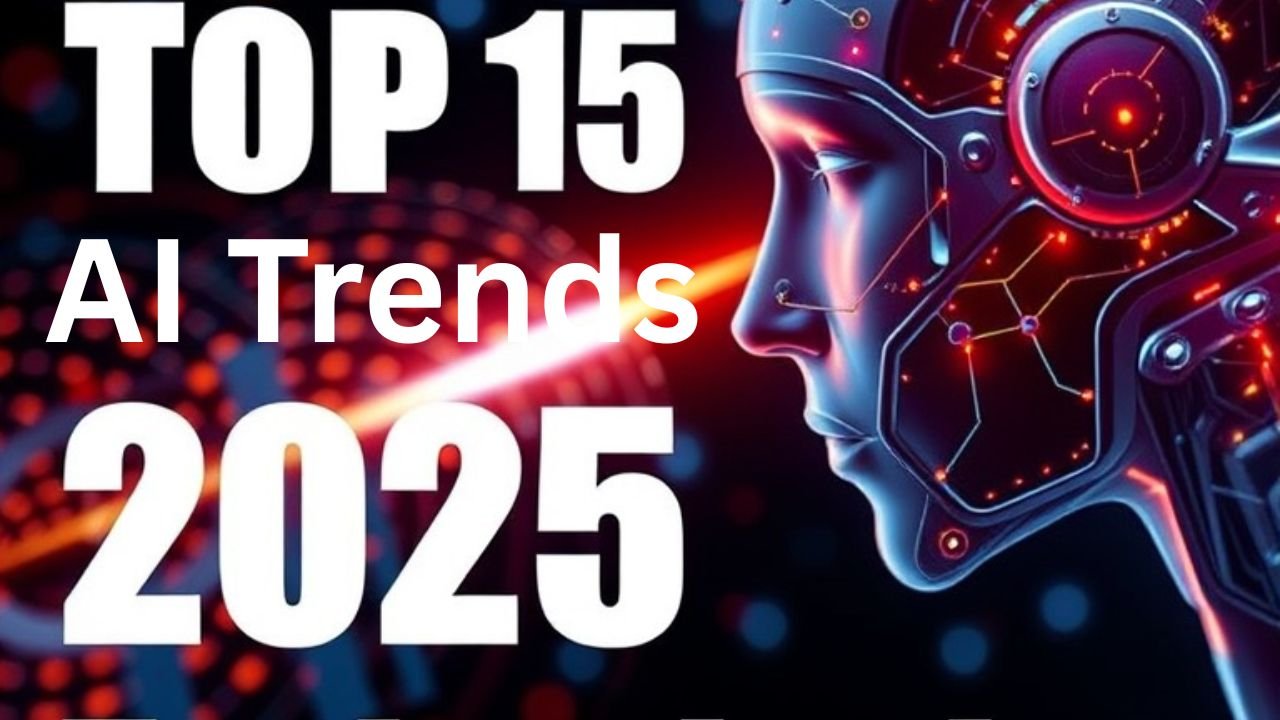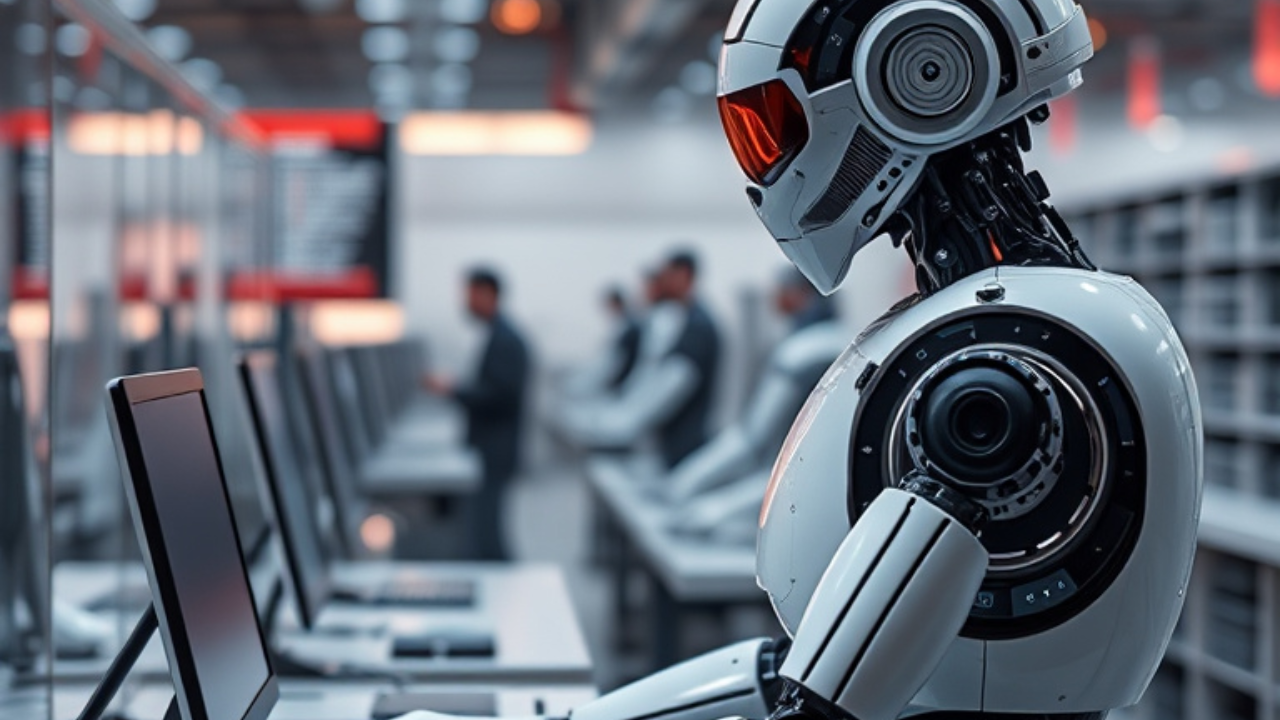Top 15 AI Technologies 2025: AI Trends
“Explore the top 15 AI trends redefining 2025—from edge computing and generative AI to neuromorphic chips, explainable systems, and cybersecurity. Learn what powers them, why they matter, and the risks ahead.”
Every year, AI changes faster than we can keep up with—2025 is no exception. These top 15 AI trends are adding new experiences, shifting industries, and adding lot of surprises. Read on to understand what’s happening now—and what it means for you.
🔹 1. Hybrid Computing (Cloud + Edge + AI + Quantum)
This setup combines cloud, edge devices, quantum systems, and AI to deliver lightning-fast, smart computing everywhere—from hospitals to homes. Gartner predicts 75% of enterprise data will be processed at the edge by 2025, cutting latency and improving privacy.
🔹 2. Generative AI
The core behind deepfakes, virtual voices, AI-written content, and more. In 2024 alone, $33.9 billion in private investment poured into generative AI technologies. It’s the engine powering modern AI experiences.
🔹 3. Agentic AI & Modular AI Agents

These AIs make decisions and execute tasks on their own—like running logistics, customer service, or even parts of businesses. The trend is validated by industry leaders expanding agent-based automation .
🔹 4. Micro‑LLMs (Lightweight LLMs)
Tiny AI models running on phones, smartwatches, and IoT devices—no internet needed. This allows you to have AI help with cooking, scheduling, or workouts right from your device.
🔹 5. Spatial & Extended Reality (XR)
Imagine non-screen digital experiences: walls come alive, classrooms feel real, and remote meetings feel physical. These immersive environments are becoming mainstream through platforms like Apple Vision Pro.
🔹 6. Ambient Invisible Intelligence
AI that works quietly in the background—adjusting thermostats, watching for health signs, even predicting crime. It’s efficient, but it raises concerns about always-on surveillance.
🔹 7. Post‑Quantum Cryptography
Quantum computers can crack current encryption in seconds. To fight this, scientists are creating post-quantum encryption systems to protect data before it’s too late .
🔹 8. Neuromorphic Computing
Brain-like chips that process information in parallel and learn from experience. This hardware is paving the way for AIs that can adapt and improve on their own over time.
🔹 9. Custom AI Hardware & Chips
Big innovations like wafer-scale processors (e.g., Cerebras) show that specialized AI chips are speeding up and reducing energy use .
🔹 10. Synthetic Media
This includes deepfake videos, text, and AI-generated influencers. More than 7,800 Steam games use GenAI tools for content already. But with realism comes risk—fake news, identity manipulation, and erosion of trust.
🔹 11. Edge & Fog Computing AI
AI computation is moving to local devices—not just the cloud. This improves speed, saves data, and boosts privacy
🔹 12. Explainable AI (XAI) & Ethical Governance
As AI grows complex, transparency becomes critical. Explainable AI makes it clear why and how AI makes decisions—which builds trust in healthcare, finance, and legal system
🔹 13. Nuclear‑Powered AI Infrastructure
AI data centers need massive power. Companies are turning to nuclear energy to fuel this growth sustainably and reliably—signaling the start of an energy-driven AI era.
🔹 14. AI in Cybersecurity
With AI both hacking and defending, smart security systems are essential. AI-driven cybersecurity is becoming the frontline defense.
🔹 15. AI-Enhanced Automation (White-Collar Roles)
AI isn’t just affecting blue-collar jobs. Even white-collar workers—accountants, journalists, analysts—are now working alongside intelligent assistants. According to IBM and Business Insider, automation is reshaping entire industries
✅ Why This List Matters
-
Generative AI is the foundation powering across the board .
-
Edge + cloud systems reduce latency and guard privacy
-
Explainable AI is vital for accountability and trust.
-
Specialized hardware drives AI’s performance-scale leap.
-
Security risks lead to new defenses like post-quantum encryption and AI security tools.
🙋 Frequently Asked Questions
Q1: What’s the difference between edge AI and cloud AI?
A1: Edge AI runs locally on devices (phones, cars), offering faster responses and better privacy. Cloud AI runs on remote servers—better for heavy tasks like training models.
Q2: Why do businesses want explainable AI?
A2: XAI promotes transparency, trust, and compliance—especially in healthcare and finance—by explaining AI decisions in human terms .
Q3: What is agentic AI?
A3: It’s AI that acts independently—making choices, performing tasks, and improving over time without human commands .
Q4: Do AI systems really need nuclear power?
A4: Yes—AI infrastructure uses massive energy, and traditional renewable sources can’t keep up. Nuclear provides a stable, high-output option.
Q5: How soon will quantum computers break encryption?
A5: Quantum PCs are advancing fast; experts warn today’s encryption may be cracked in seconds soon. That’s why post-quantum safeguards are urgent .














